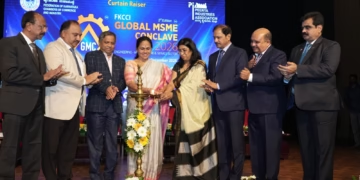Speaking on the occasion, the President said that public health is a global public good and a basic human right. Despite the strides we have taken as a country, there remain regional, rural-urban and gender and community imbalances in terms of health provision. Without adequately addressing these, we cannot rest.
The President said that as societies evolve, economies develop and population patterns change, countries go through epidemiological transitions. India too is experiencing such a transition. It is marked by three challenges in disease control. And we have to manage all three simultaneously. First, India has to reduce maternal and infant mortality as well as communicable diseases such as tuberculosis, vector-borne diseases such as malaria, water-borne diseases such as cholera, diarrhoeal diseases, and vaccine-preventable like measles and tetanus. Second, India has to find an answer to the rise in non-communicable or lifestyle diseases – like diabetes, cardiovascular diseases, and many cancers. And finally we need to develop systems to detect and cope with new and re-emerging infectious diseases like HIV, avian flu and H1N1 influenza. In a globalised world, with people travelling in and out of our country in larger and larger numbers, a few small cases can very quickly scale up into a large outbreak.
The President said that this three-pronged challenge calls for interventions across the continuum of care. It calls for prevention of disease, promotion of good health practices and treatment and cure in case of an illness. The impact of a health problem is cross-cutting – it affects a variety of sectors. The meeting of this challenge should also follow a multi-stakeholder approach. Government and civil society, private and public health care providers, charitable and economic institutions all have a role and a stake.
Referring the shortage of manpower in the healthcare system, the President said that there is urgent need for filling the gap in healthcare professionals in our country, and to reform medical education so as to create room for more colleges and more medical graduates. Science and technology are most commonly applied to our benefit by engineers and doctors. In India we have 1.47 million undergraduate engineering seats, but only 67,352 undergraduate medical seats. And about 20 per cent of those seats were added in the past four years. As a country and a system, we need to address this gap quickly.
The President said that doctors need a sharp mind – but much more than that, they need a warm heart. He urged CMC Vellore to continue to train doctors and nurses with warm hearts.
Later in the day, the President will also inaugurate the Kidney Transplant Unit and Cardiac Unit of the Sri Narayni Hospital and Research Centre, Vellore.
*****
